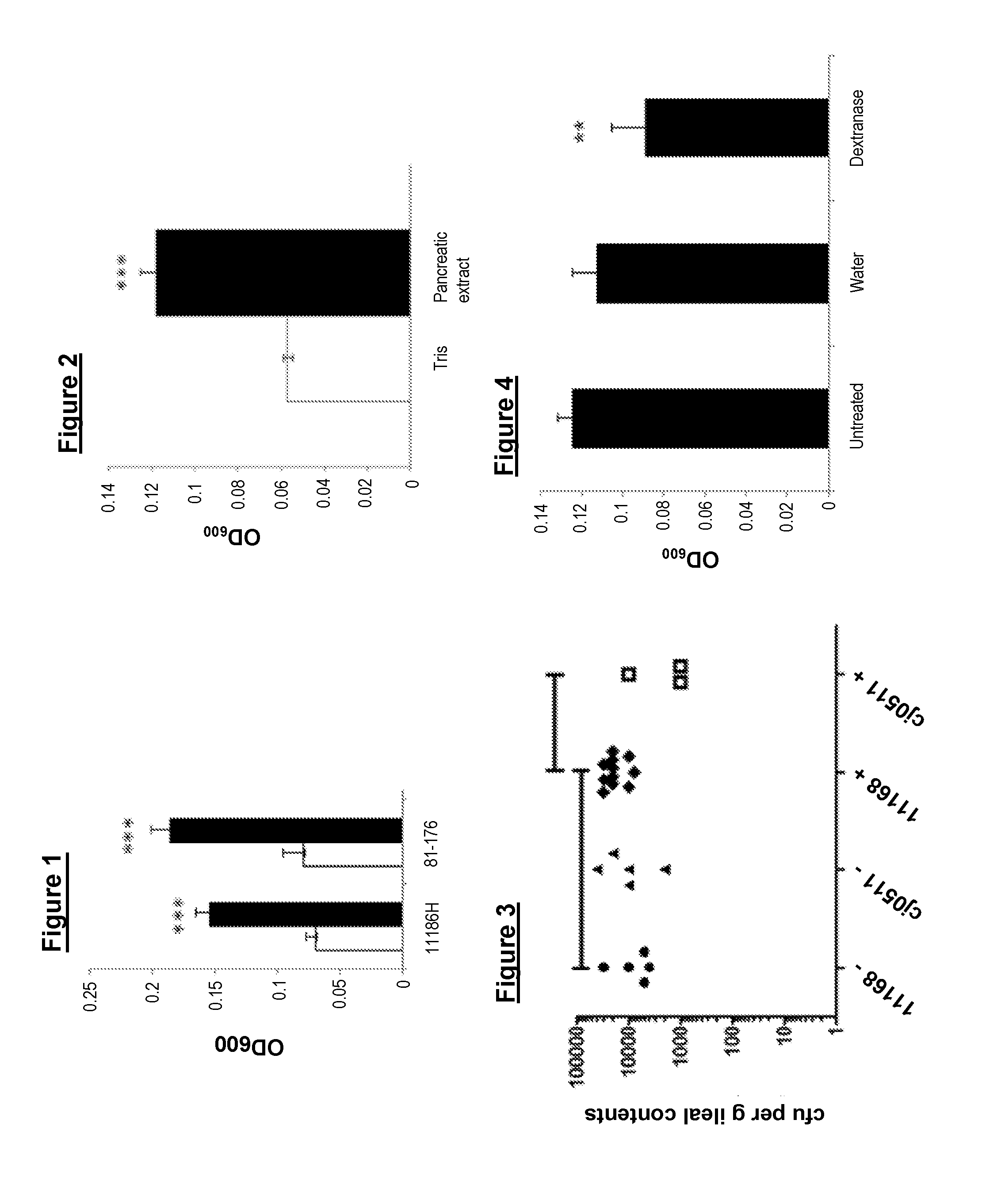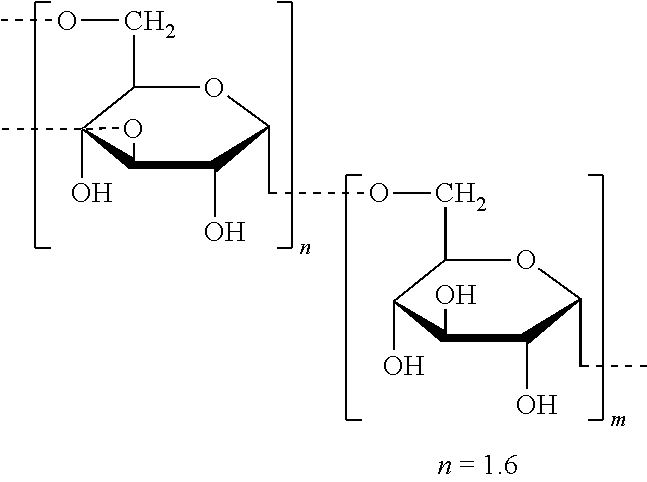Anti-microbial agents and uses therefor
a technology of anti-microbial agents and anti-microbial agents, which is applied in the direction of biocide, dispersed delivery, peptide/protein ingredients, etc., can solve the problems of disrupting biofilm, and achieve the effect of reducing the likelihood of opportunistic infection
- Summary
- Abstract
- Description
- Claims
- Application Information
AI Technical Summary
Benefits of technology
Problems solved by technology
Method used
Image
Examples
example 1
Physiological Concentrations of Pancreatic Alpha-Amylase is the Signal for Induction of EPM by the Bacterium
[0076]As colonies of C. jejuni freshly isolated from stool are invariably more mucoid than laboratory strains, we hypothesised that the EPM is induced in C. jejuni in response to host molecules and that its expression is lost upon laboratory culture. C. jejuni is known to respond to the presence of host-specific signals including a low oxygen environment, bile salts, norepinephrine (Mills et al., 2012, Malik-Kale et al., 2008, Cogan et al., 2007).
[0077]We demonstrated that the bacterium detects and responds to the presence of host pancreatic enzymes. Detection of the alpha-amylase signal requires an intact cj0511 gene, encoding a predicted secreted protease. Previous studies reported the Cj0511 protein in the secretome or specifically within outer membrane vesicles (Prokhorova et al., 2005, Elmi et al 2012) and we demonstrated for the first time that it is a protease capable o...
example 2
The Secreted Carbohydrate is Alpha-Dextran
[0078]In this example we show that exposure to pancreatic alpha-amylase from mammals or birds results in secretion of an alph-dextran that promotes biofilm formation in vitro.
Growth in the Presence of Mammalian Pancreatic Alpha-Amylase Results in a Large Mucoid Colony
[0079]Physiological concentrations of mammalian pancreatic alpha-amylase are estimated to be nanomolar (Slaughter et al., 2001). Hog pancreatic alpha-amylase (HP amylase) was incorporated into MHA agar (15 nM, 100 nM and 100 μM) and formation of large mucoid colonies of C. jejuni 11168H was observed only at the highest concentration. Mucoid colonies were also produced by other C. jejuni strains (81-176, 81116, G1, X) in response to 100 μM HP amylase but not by Campylobacterrectus NCTC 11489 (data not shown). Culture on 100 μM microbial alpha-amylase (from Aspergillus oryzae) did not result in mucoid colonies in any of the strains tested (data not shown).
Mucoidy in Fresh Clinical...
example 3
The EPM Promotes Resistance to Environmental Stresses
[0088]In this Example we show the dextran-containing EPM rendered the bacterium more resistant to environmental stresses.
[0089]Furthermore induction of EPM led to a an increase in interaction with eukaryotic cell lines and a dramatic increase in killing in the Galleria infection model and to an increase in the colonisation of chicks.
EPM Promotes Survival in Aerobic Conditions, at High and Low Temperatures and at Low pH In Vitro
[0090]To determine the effect of the EPM on resistance to environmental stress, C. jejuni was cultured in the absence or presence of 100 nM HP amylase and its resistance to high (65° C.) and low temperature (4° C.), ambient conditions (20° C. in air) and low pH (pH 4.0) was determined. From a starting inoculum of approximately 109, bacteria grown in the presence of amylase were detectable after 9 minutes at 65° C. compared to bacteria grown without amylase, counts of which fell below the limit of detection a...
PUM
| Property | Measurement | Unit |
|---|---|---|
| temperatures | aaaaa | aaaaa |
| temperatures | aaaaa | aaaaa |
| temperatures | aaaaa | aaaaa |
Abstract
Description
Claims
Application Information
 Login to View More
Login to View More - R&D
- Intellectual Property
- Life Sciences
- Materials
- Tech Scout
- Unparalleled Data Quality
- Higher Quality Content
- 60% Fewer Hallucinations
Browse by: Latest US Patents, China's latest patents, Technical Efficacy Thesaurus, Application Domain, Technology Topic, Popular Technical Reports.
© 2025 PatSnap. All rights reserved.Legal|Privacy policy|Modern Slavery Act Transparency Statement|Sitemap|About US| Contact US: help@patsnap.com


